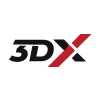Custom Roster Management System Development
In dynamic work environments where optimal resource allocation is paramount, the Roster Management System (RMS) emerges as a cornerstone. It's designed to meticulously manage and allocate work schedules, ensuring that staffing aligns with operational demands. By eliminating manual scheduling hiccups and fostering optimal team distribution, RMS aids businesses in achieving maximum productivity. A trailblazer in this domain is Royex Technologies. Hailing from Dubai and steeped in a rich history of a decade in software development, Royex Technologies has demonstrated unparalleled prowess in sculpting custom Roster Management Systems tailored to diverse organizational frameworks.

Optimizing Workforce Allocation with Precision
A Roster Management System transcends the realm of mere scheduling. It’s an amalgamation of sophisticated algorithms and user-friendly interfaces designed to accommodate varying shifts, employee preferences, skill sets, and organizational demands. Whether it’s about ensuring round-the-clock coverage, minimizing overtime costs, or factoring in individual employee availability, RMS is adept at crafting rosters that resonate with both business objectives and workforce welfare. This equilibrium ensures that while businesses can maintain uninterrupted operations, employees also enjoy balanced work hours and predictable schedules.

Fostering Transparency and Collaboration
Beyond its core functionality, an RMS enhances workplace transparency and collaboration. Employees can access their schedules, place requests for shifts or leaves, and even swap shifts with peers, all within the system. Supervisors can overview team allocations, respond to requests, and make real-time adjustments. This two-way communication channel ensures that rostering decisions are not just top-down mandates but collaborative efforts that factor in ground realities and individual preferences.
Features
Main Features of Roster Management System




